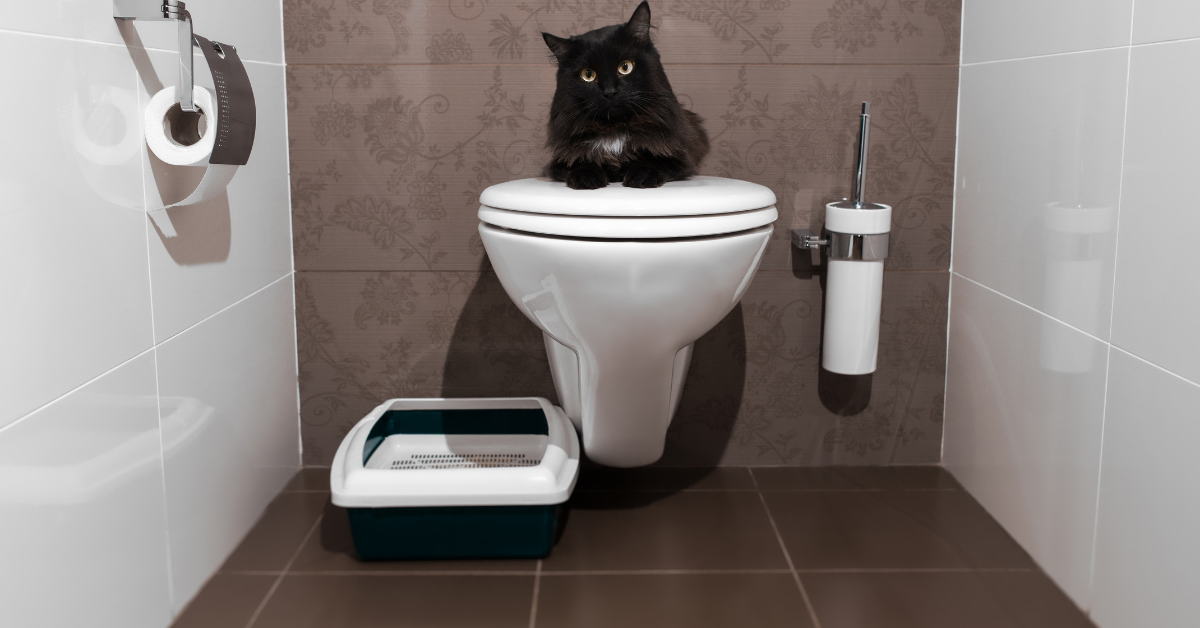What are your opinions about Don’t flush cat feces down the toilet?

Introduction
As feline proprietors, it's necessary to bear in mind how we get rid of our feline pals' waste. While it may appear hassle-free to flush pet cat poop down the bathroom, this practice can have destructive effects for both the setting and human health and wellness.
Environmental Impact
Purging cat poop introduces hazardous pathogens and parasites into the supply of water, posing a considerable danger to aquatic environments. These contaminants can negatively influence marine life and compromise water quality.
Health Risks
In addition to ecological concerns, purging cat waste can also position health and wellness dangers to human beings. Pet cat feces might consist of Toxoplasma gondii, a bloodsucker that can create toxoplasmosis-- a possibly severe illness, specifically for expecting females and people with damaged immune systems.
Alternatives to Flushing
Luckily, there are much safer and more responsible means to deal with cat poop. Consider the adhering to options:
1. Scoop and Dispose in Trash
The most usual technique of throwing away cat poop is to scoop it into a biodegradable bag and toss it in the garbage. Make sure to utilize a specialized litter scoop and dispose of the waste quickly.
2. Use Biodegradable Litter
Go with eco-friendly pet cat clutter made from products such as corn or wheat. These trashes are eco-friendly and can be safely taken care of in the garbage.
3. Hide in the Yard
If you have a lawn, think about burying cat waste in a marked area away from vegetable yards and water sources. Make certain to dig deep adequate to stop contamination of groundwater.
4. Mount a Pet Waste Disposal System
Buy a pet garbage disposal system especially designed for pet cat waste. These systems make use of enzymes to break down the waste, minimizing smell and environmental impact.
Final thought
Liable animal possession expands past offering food and shelter-- it likewise includes correct waste monitoring. By refraining from flushing pet cat poop down the bathroom and opting for different disposal methods, we can decrease our environmental footprint and secure human health and wellness.
Why Can’t I Flush Cat Poop?
It Spreads a Parasite
Cats are frequently infected with a parasite called toxoplasma gondii. The parasite causes an infection called toxoplasmosis. It is usually harmless to cats. The parasite only uses cat poop as a host for its eggs. Otherwise, the cat’s immune system usually keeps the infection at low enough levels to maintain its own health. But it does not stop the develop of eggs. These eggs are tiny and surprisingly tough. They may survive for a year before they begin to grow. But that’s the problem.
Our wastewater system is not designed to deal with toxoplasmosis eggs. Instead, most eggs will flush from your toilet into sewers and wastewater management plants. After the sewage is treated for many other harmful things in it, it is typically released into local rivers, lakes, or oceans. Here, the toxoplasmosis eggs can find new hosts, including starfish, crabs, otters, and many other wildlife. For many, this is a significant risk to their health. Toxoplasmosis can also end up infecting water sources that are important for agriculture, which means our deer, pigs, and sheep can get infected too.
Is There Risk to Humans?
There can be a risk to human life from flushing cat poop down the toilet. If you do so, the parasites from your cat’s poop can end up in shellfish, game animals, or livestock. If this meat is then served raw or undercooked, the people who eat it can get sick.
In fact, according to the CDC, 40 million people in the United States are infected with toxoplasma gondii. They get it from exposure to infected seafood, or from some kind of cat poop contamination, like drinking from a stream that is contaminated or touching anything that has come into contact with cat poop. That includes just cleaning a cat litter box.
Most people who get infected with these parasites will not develop any symptoms. However, for pregnant women or for those with compromised immune systems, the parasite can cause severe health problems.
How to Handle Cat Poop
The best way to handle cat poop is actually to clean the box more often. The eggs that the parasite sheds will not become active until one to five days after the cat poops. That means that if you clean daily, you’re much less likely to come into direct contact with infectious eggs.
That said, always dispose of cat poop in the garbage and not down the toilet. Wash your hands before and after you clean the litter box, and bring the bag of poop right outside to your garbage bins.
https://trenchlesssolutionsusa.com/why-cant-i-flush-cat-poop/

We had been made aware of that editorial about Don’t flush cat feces down the toilet through an acquaintance on our other web address. Do you know someone else who is truly interested in the topic? Please feel free to share it. I take joy in reading our article about Don’t flush cat feces down the toilet.
Call Today
Comments on “Reasons Flushing Cat Poop Down Your Toilet Isn't a Good Idea - Advice for Safer Disposal”